Inside: Wondering what unschooling kindergarten should look like? While there isn’t a formula, I can offer you several ideas to inspire you while you figure out what unschooling looks like for your unique family (rest assured: it’s supposed to look different).
A new-to-unschooling parent posted in a local unschooling Facebook group, “So, what kind of curriculum do you all recommend for kindergarten? I’m new to this whole unschooling thing.”
Cue: several veteran unschooling parents responding with the same advice, which went something like, “You don’t need any curriculum at all. Keep right on living life as though school does not exist.”
It makes perfect sense to those of us who are years into the unschooling lifestyle, but I can definitely see how that answer might be frustrating on the receiving end.
What exactly does it mean to live life as though school does not exist? Surely you must need to do something differently now that your child is officially “school age”?
If you’re one of the frustrated, wondering exactly how to approach unschooling kindergarten, I want to offer a little bit more clarity.
Just keep in mind that ultimately, unschooling is all about creating a unique (not cookie-cutter) education. So you’re going to need to get comfortable with your child’s education looking nothing like school, or any other unschooled child’s education, for that matter.
There isn’t a formula other than following your child’s lead, offering them new and interesting educational opportunities and finding resources to support their interests.
Related: Unschooling Plans & Resources for 2022-2023 (7th, 5th, 3rd, K)
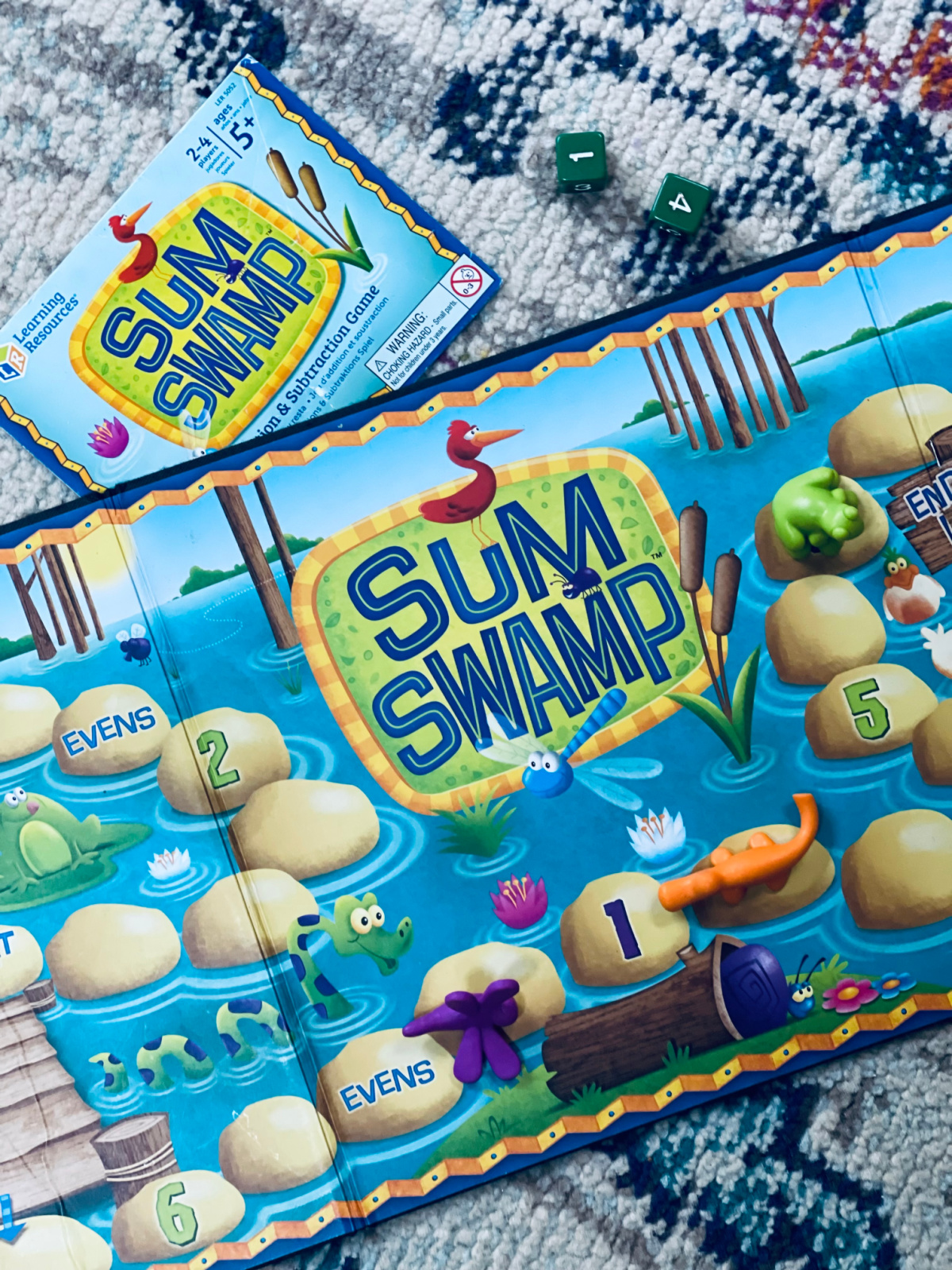
Every Unschooling Family Is Unique, So Every Unschooling Education Will Be Unique (That’s Kind of the Point)
I can’t know what life has looked like in your home up until this point.
Every unschooling family is unique because you, the unschooling parents, are unique.
Maybe you adore the outdoors, so spending a lot of time hiking and visiting state parks is a high priority, and screens take a backseat.
Or maybe you and your partner are both avid gamers and can’t stand bugs and dirt, so your child has grown up with video games and not hiking being a natural part of life.
Life without school might look very different for these two families.
At this age, including your child in the things you love is only natural, and usually they are happy to participate in what brings you joy.
Now that you’ve chosen to unschool, your job is to now also be a student of your child, figure out what their unique interests are – which might be different from yours – and bring more of that to your days.
But please don’t stop doing what brings you joy!
Balance and collaboration are a huge part of unschooling, at least to me, and you will burn out if you give up your interests in favor of only doing what your child loves to do.
You Might Also Like: How to Homeschool Without a Schedule and THRIVE
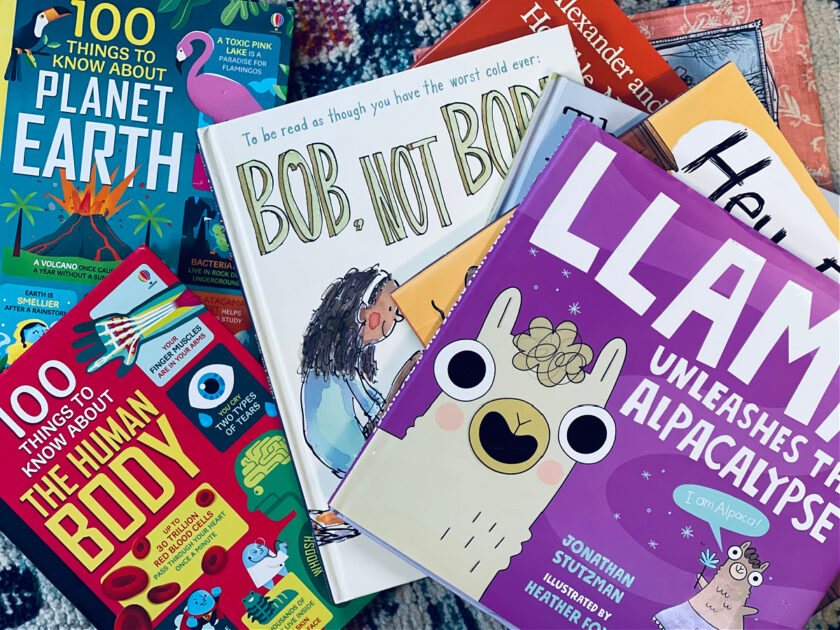
7 Ideas for Unschooling Kindergarten (No Curriculum Required)
This post probably contains affiliate links, which means I may earn a commission if you make a purchase through those links. As an Amazon Associate, I earn from qualifying purchases. You can find our full disclosure HERE.
Here are seven things that have been an integral part of our lives from the time our children were small. This is our “normal”.
So for us, when I think about unschooling kindergarten, I think about continuing to do these things because this is how we’ve always lived life without school.
With a ton of play, of course. Fred Rogers knew best when he said:
Play is often talked about as if it were a relief from serious learning. But for children play IS serious learning. Play is really the work of childhood.
Fred Rogers
These aren’t mandates. They’re ideas based on what’s worked for us, one unschooling family out of thousands.
Try them out with your child this year: keep what works, let go of what doesn’t.
1. Read, read and read some more.
The more you can read to your child, the better!
If this sounds suspiciously like good general parenting advice…it is. Unschooling is a continuation of the parenting journey you started with your child at birth.
I’ve found establishing reading routines helpful for me and my kids at this age.
We always read before bed and at poetry tea time 2-3 times a month. As they move into kindergarten, I try to establish an additional morning or during the day reading time as well.
I choose picture books I know are amazing, but I never force a book. Some of my kids have been far more open to my suggestions than others.
On the flip side, if they see a book at the library that looks interesting to them, I will always read it at least once.
It might be tempting to rush into chapter books at this age, but the picture book stage is so short!
Only move to chapter books if they ask for them. They have years ahead of them for chapter books.
Related: 27 Best Picture Books to Read Aloud (Most Requested Rereads)
2. Play board games (they’re all educational).
We love board games and card games in our house! Unless you are adamantly against games, I’d encourage you to give it a try.
Try a mix of games, from classic 5-year-old games like Candyland to collaborative games like Race to the Treasure (any game from Peaceable Kingdom is great!) to Learning Resource games like Sum Swamp and Money Bags.
Even if the game isn’t focused on a specific subject like math, it still counts as learning!
Taking turns, losing gracefully, and following rules (or negotiating with other players to make up your own “house rules”) are all valuable learning experiences.
All of my kids enjoy board games and card games, with their own preferences for types of games. Some love simple card games, while others prefer strategy board games.
They are a big part of our unschooling life, starting around kindergarten age.
Related: The Best Educational Board Games (That We Play All The Time)
3. Plan regular outings, taking your child’s temperament into account.
No matter where we’ve lived over the years, outings to museums, zoos, parks and libraries have been a huge part of our kids’ childhood.
At this age, children’s museums, science museums and zoos/aquariums are amazing! They usually have live animal presentations, hands-on exhibits and tons of fun activities.
If cost is an issue, check with your local library to see if they partner with any museums. Or search online to see if there is one membership you could buy that offers reciprocity with several other museums/zoos/aquariums.
Libraries offer a ton of fantastic programs for free! Ask your local libraries about story hours, clubs and craft times.
Explore local playgrounds and parks. Take nature walks.
See which of these outings lights your child up more. Then do more of that!
Make sure to take your child’s temperament into account as well. Some children thrive when they spend more time at home, while others (like my youngest), want to be out and about as much as my introverted self can tolerate.
Related: How Much Does Unschooling Cost? Typical Expenses (& How to Save)
4. Find a wide variety of opportunities for socialization.
As much as homeschool parents tend to shrug off the “what about socialization” question, I don’t.
Especially if you live in a rural area like we do, a lot of hard work goes into finding regular friends for your homeschooled kids.
Will they see kids randomly at parks or libraries or stores? Sure, and that does offer socialization opportunities.
But it rarely fosters steady friendships because you don’t always see the same children on a regular basis.
To find friendship-making opportunities, you can search on Facebook for homeschool groups in your state (add “secular” to the search if you want non-religious options). Once you join the group, you can ask about homeschool park meet-ups, co-ops or groups in your area.
Libraries can also be a great way to meet other homeschool families. Their preschool story hour might have kindergarten-age kids as well or a specific kindergarten story hour.
From there, you might need to be persistent in initiating regular playdates, until you find a group of friends that stick.
Personally, we tend not to pursue sports or extracurriculars at this age, in favor of spending money and time on museums and resources, instead.
But if you have a kid begging to play soccer or baseball, or one who thrives on tons of activities, by all means, sign them up!
There are also a ton of nature-centered homeschool groups popping up all over the place, from Wild & Free groups to Forest Schools (both formal or informal).
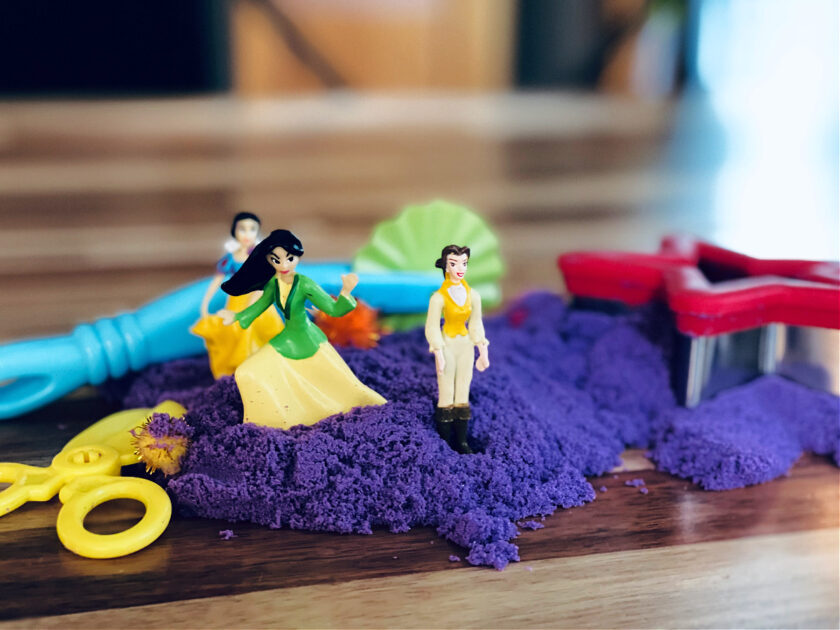
5. Keep a variety of activities and open-ended toys available and accessible.
I try to keep a wide variety of activities and open-ended toys available at home, where they can easily access them on their own.
We have things like…
- Puzzles (Usborne/Paper Pie has a great selection!)
- Kinetic Sand
- Playdough
- Dress-up
- Paper, Clipboards & Art Supplies
- LEGO
- Barbies & Accessories
- Baking Supplies
- Stuffed Animals
- MagnaTiles with Little People
What you decide to bring into your home will be up to you. What do you find fun? What is your child asking for?
Lately, I’ve started offering activities more frequently for my youngest, currently 4-years-old. She usually wants to participate, and if she’s not interested, that’s o.k., too.
6. Embrace an extremely powerful tool: screens.
We have been an unlimited screen time family for three years now, and I truly cannot imagine going back to limiting screen time.
We use screens throughout the day off and on for SO many different purposes, all of which are educational in one way or another.
They ask so many questions at this age! I use google and Youtube constantly to answer questions like, “Why do thunderstorms happen?” or “What makes the sky blue?”
Besides using screens to answer all their questions, there are so many fantastic shows and apps for kindergarten learning!
The role of the unschooling parent is to find resources tailored to their interests, but also to occasionally spread a “feast” of sorts and let them decide what to consume.
If I know they have a strong interest in the human body, for instance, I might pick a human body episode of Magic School Bus and see if they want to watch it with me.
If they love telling or writing stories, I might suggest we watch various shows and movies together that have great story lines.
If they love math, I might suggest Odd Squad on PBS Kids (we love PBS Kids!).
Some of my kids adored Wild Kratts at this age, watching every single episode via a PBS Kids channel subscription.
Others loved My Little Pony, a seemingly less educational show, but there’s so much learning there, including great story-telling, once you remove your “school glasses” and can see it.
There are also so many fantastic educational apps for kids out there today! Some of our favorite apps for unschooling kindergarten that we’ve enjoyed at various times over the years:
- Lingo Kids
- Kiddopia
- Reading Eggs
- Human Anatomy App
- Science for Kids
- Prodigy Math
For apps that require subscriptions, we tend to purchase one month at a time, as my kids tend to tire of them after about a month or two.
Related: The Case for Unlimited Screen Time (from a Recovering Control Freak)
A Note on Unlimited Screen Time: Only you know your kids and whether or not they need your help to establish healthy rhythms and habits around screens. Ignore the doomsayers and the overly enthusiastic “any kind of screen limits is not unschooling” crowd. Follow your parental gut and do what you think is best for your children.
7. Build on their unique interests as much as possible.
Again, the whole point of this unschooling thing is child-led learning. You are a student of your child.
Answer their questions (we answer several a day at this stage! google is my BFF) immediately if you can. And if you notice that certain subjects interest them, build on it.
If they love bugs, maybe get a bug box, so they can catch and study bugs or other creatures before releasing them back into the wild. Get bug books from the library, and see if a local nature center or science museum has bug exhibits.
Maybe, like my 4-year-old, they love playing doctor. So you get them a real stethoscope (the cheap plastic ones are THE WORST) and a squishy human body kit or a human body floor puzzle.
Or you find shows and Youtube channels that match their interests. Or you find local classes they might like to try.
Whatever they love, do whatever you can to bring more of that into their lives.
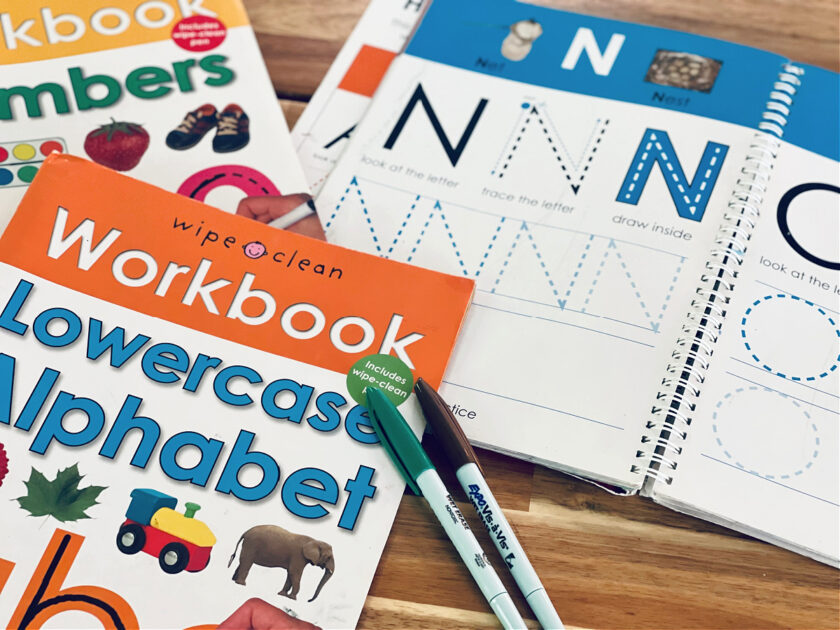
Should I Worry About Reading or Writing Instruction in Kindergarten?
As a general rule, you don’t need to stress about reading and writing in kindergarten. The traditional unschooling approach is to let your child lead in all things, including language arts and literacy, in general.
If your child is asking for reading and writing support and/or instruction, absolutely give it!
If they aren’t, that doesn’t mean you need to be totally hands-off.
Last year, my son was technically in kindergarten, and I realized he didn’t know all of his letter names yet (no big deal – just an observation).
So I made THIS DIY alphabet banner to hang in our playroom. And we played board games that included a lot of letter recognition – think games with grids like in Race to the Treasure.
By the end of the year, he knew his letters.
This same child also started asking for me to put my fingers under the words when I was reading aloud to him before bed.
He also contemplated out loud the sounds in certain words and wondered what letters made those sounds, and I answered his questions.
Kindergarten-aged children will often start writing on their own. They might even do this earlier, like my youngest who started asking to write letters when she was 4-years-old.
You can always have Wipe Clean handwriting books like THESE available. We’ve had these since my oldest was in kindergarten, and every child has used them at least a handful of times around this age.
Bottom Line? Unschooling is about trusting your child to acquire necessary skills when they’re ready. And what skill is more necessary than reading and writing? It’s everywhere!
Related: Learning to Read Is a Natural Process…If You’re Willing to Be Patient
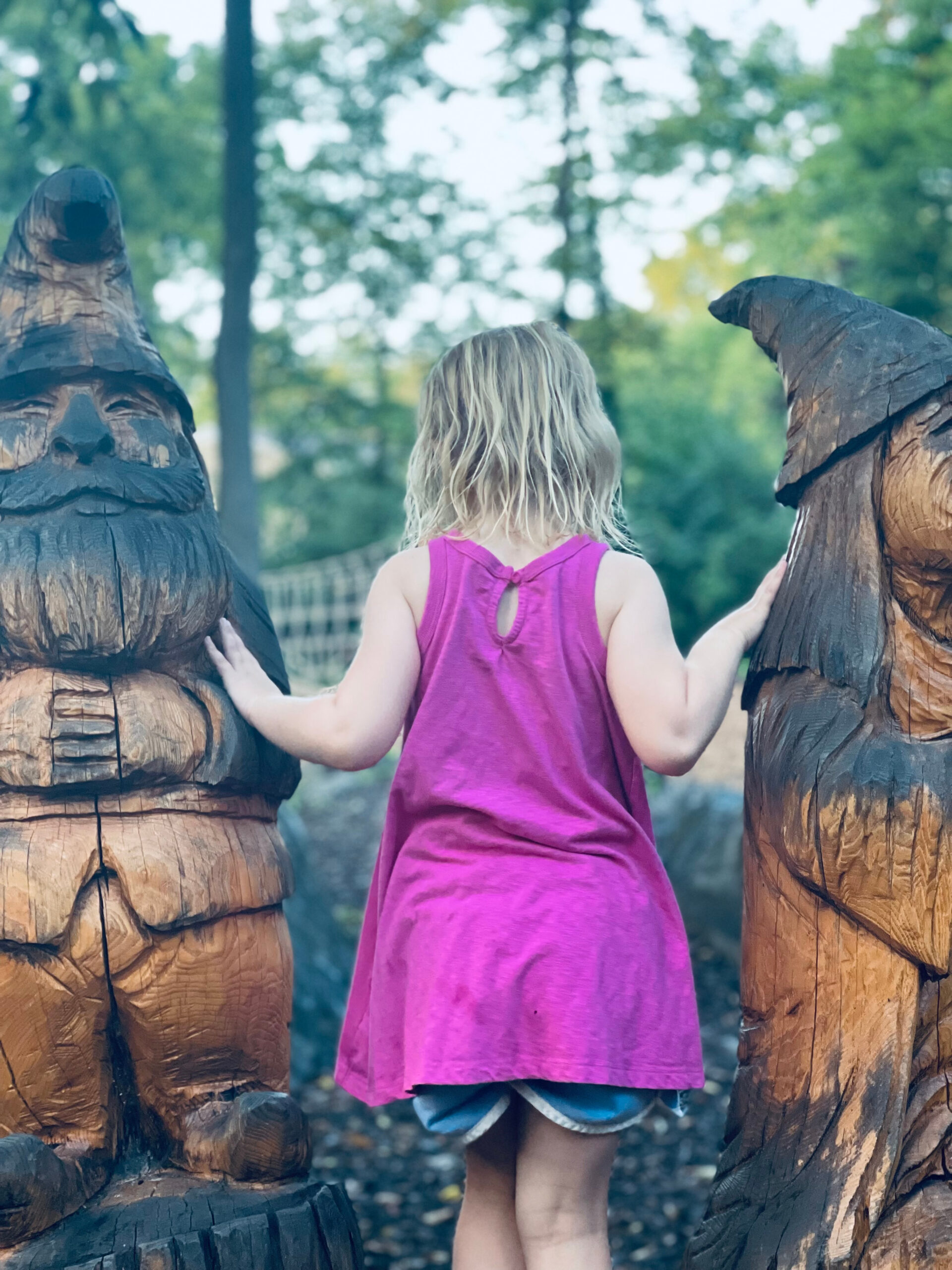
Embrace the Freedom Unschooling Has to Offer
Society tells us that when our children turn 5-years-old, it’s time for them to spend seven hours a day in a school building.
At school, adults dictate what they learn and how they learn it. They also dictate when they can go to the bathroom, go outside or get up and move their bodies.
Unschooling offers you and your kids the opportunity to step off school’s conveyor belt assembly line, the cookie cutter education system that works for some, but I’d venture to speculate, not the majority.
Not everyone can – or wants to – unschool. But if you’re feeling drawn to the non-traditional education unschooling offers, make the most of it!
Enjoy the freedom that stepping outside the system offers you. Take the time to deschool yourself, and try not to spend it worrying that you’re not doing enough.
You truly don’t need curriculum. I haven’t used curriculum for years now, and my kids – from almost 14 down to 4 – learn so much every single day, building their own unique knowledge set.
I have one child who adores geography and history and circuits, another who loves learning about neurodivergence, art and animation and still another who enjoys all things human body (something her older siblings think is gross!).
I can say with confidence that their unique education is preparing them for whatever unique path they will choose to take after graduation, whether that’s college or the workforce or something in between.
Unschooling kindergarten is just the beginning, and I hope this year shows you that you can live an amazing life without school and THRIVE.
Welcome to unschooling!
Read Next: Top 12 Unschooling Books for Rethinking Education
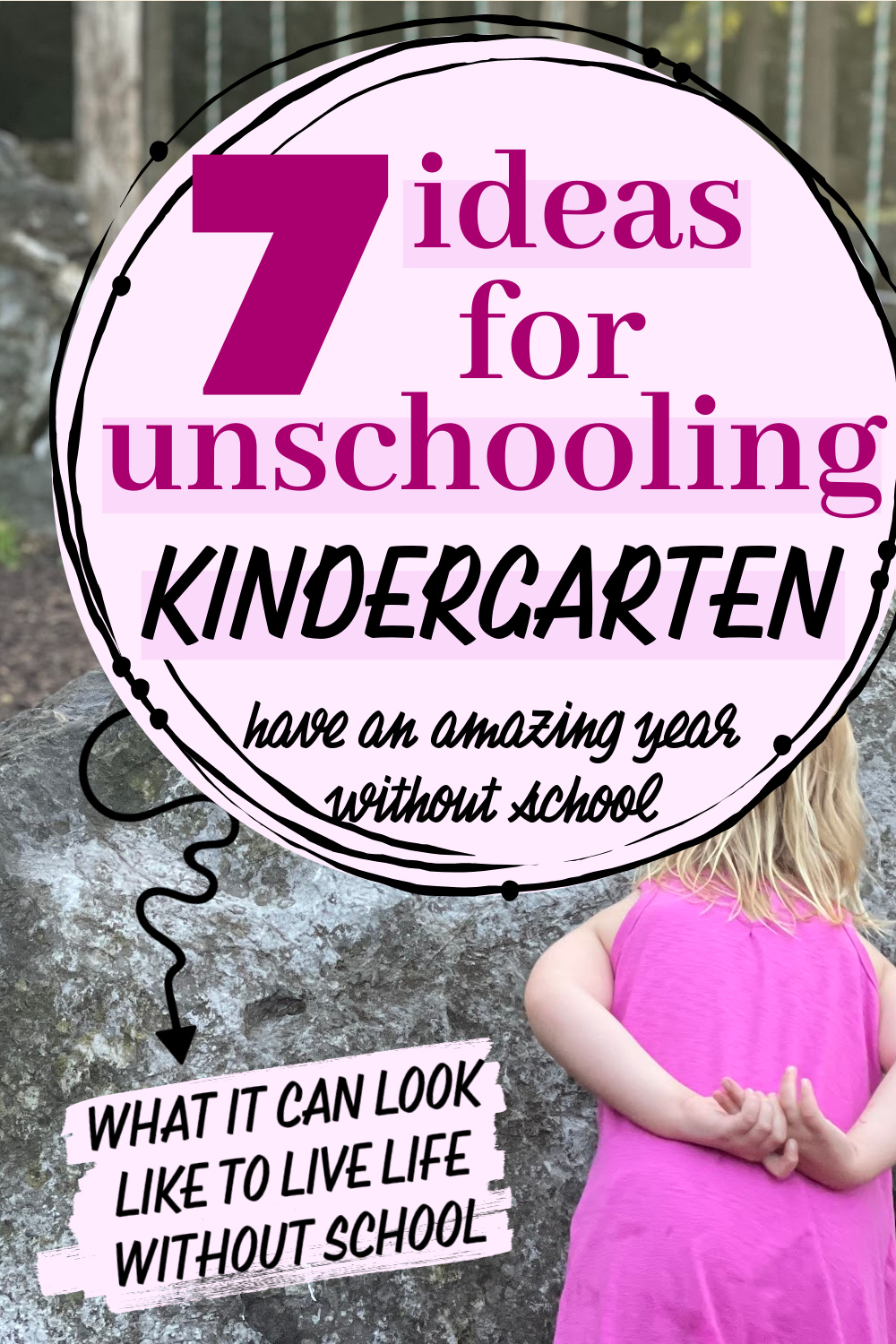

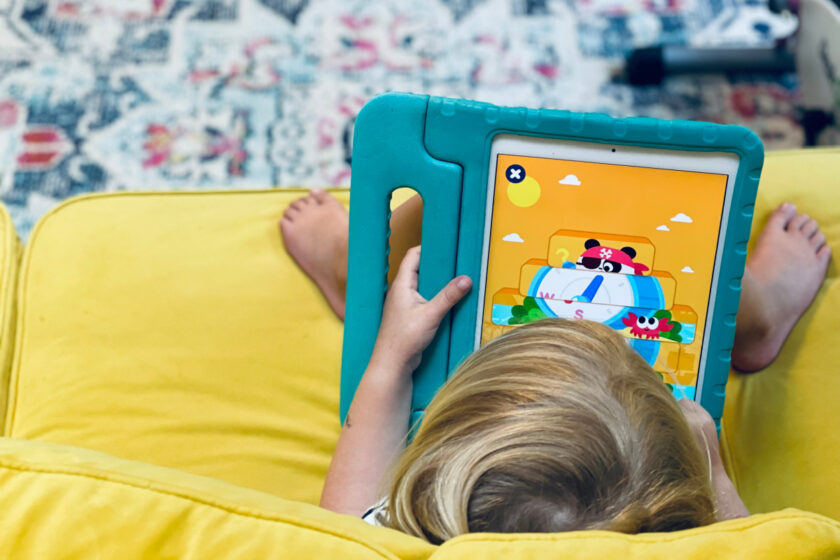
Okay, you do exactly what I want to do!
I also wrote a natural motherhood book, learned web development, and am working on building the blog and other digital products to sell.
However, how do you be a stay-at-home mom AND work at the same time?
I have one 4 year old, I’m a single mother and I thought I’d get things done over the summer but couldn’t with her needing my attention all day.
We have no family or friend around here and I parked her in front of the tv more than I care to admit.
Once her preschool came around again, I am finally able to work. They learn so many amazing things this year and I’m happy she’s happy but I’m very nervous about the public school system and I do want time to work.
I feel like becoming a single mother really messed up my parenthood dreams.
I would love to travel with her and work while doing that as well.
How do people do this?